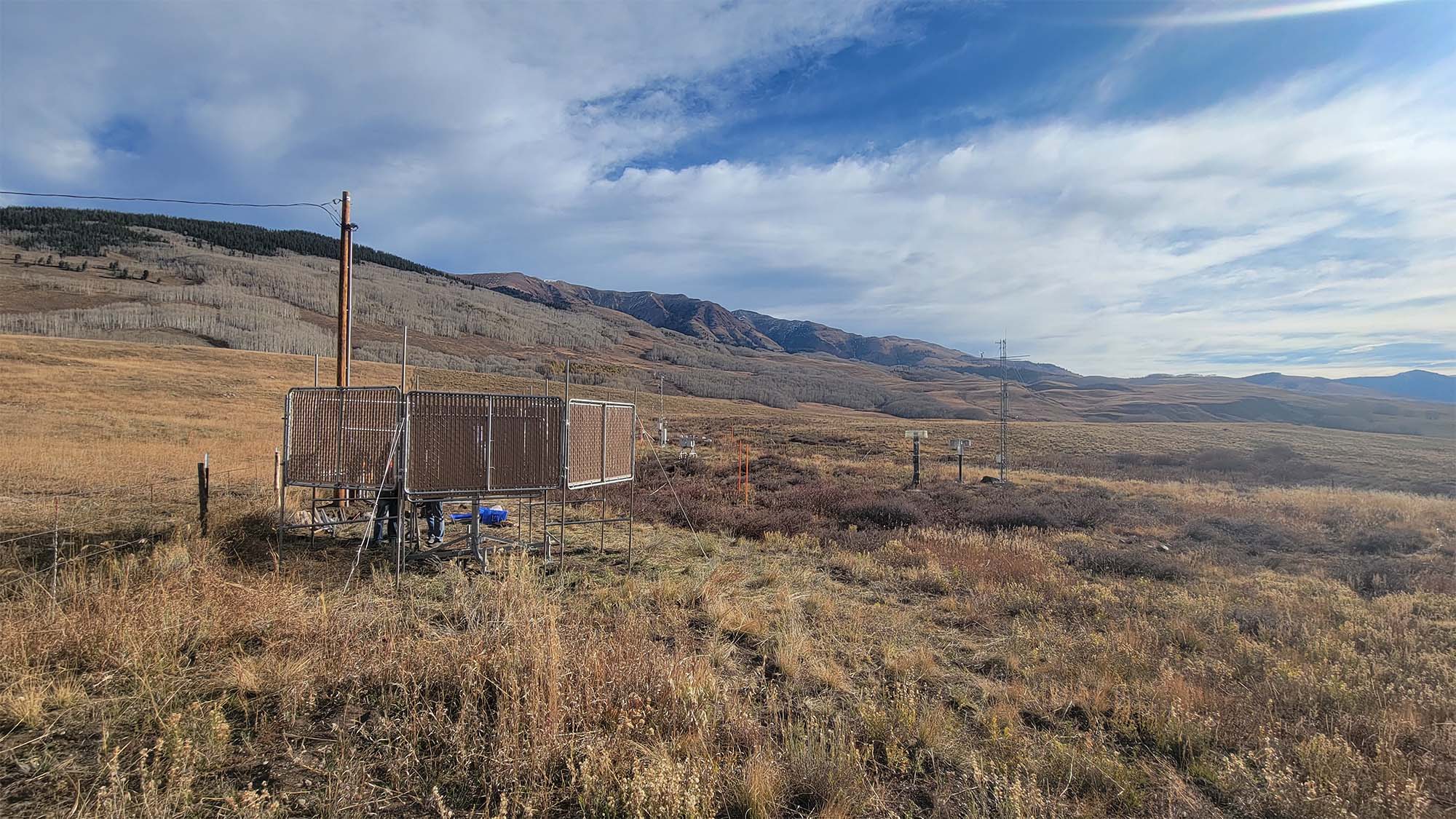ARL Prepares for 2022 AGU Meeting
December 2, 2022
A number of presentations and invited talks at AGU cover a range of research from NOAA’s Air Resources Lab on the boundary layer. The AGU fall meeting is an influential conference dedicated to the advancement of Earth and space sciences. This year AGU is held in Chicago, IL, as well as virtually.

The SPLASH campaign is one of a number of NOAA investigations on precipitation over a variety of landforms.
Hydrology, and efforts to improve our predictions of water resources is the subject of an invited talk by Tilden Meyers. Observations from several ongoing field campaigns will be highlighted to demonstrate the coupling and interactions between the ground surface and overlying atmosphere as they affect water sources. The increasing frequency of wildland fires has provided an opportunity for NOAA to establish four boundary layer supersites in the Western U.S. to expand our measurement capabilities that will enable better predictive modeling.
Tilden P. Meyers, NOAA OAR Air Resources Laboratory: H43A-01 – Advancing our hydrologic predictive capabilities from comprehensive field campaigns and advanced research networks (Invited)
The forest canopy’s effect upon boundary layer is difficult to model; Zach Moon presents an invited talk on Canopy Radiative Transfer and Implications for In-Canopy Photolysis. This analysis uses an idealized multilayer canopy model to reduce errors in the photolysis rate. The inclusion of forest canopy effects in NOAA’s future online UFS-based coupled air composition model using the Community Multiscale Air Quality Model (Online-CMAQ) will also be presented. Zachary Moon, NOAA OAR Air Resources Laboratory: A42D-05 – Canopy Radiative Transfer Spectral Resolution and Implications for In-Canopy Photolysis (Invited)
LaToya Myles, as chair of AGU’s Honors and Recognition Committee, leads a Town Hall on AGU’s Honors and Awards Committee audit conducted in 2022 to improve representation among the nominees and the selection committees for awards. The town hall is open to all attendees. TH15D: Refining the AGU Honors Program of the Future
Other posters and presentations by ARL researchers include research on urban meteorology, air quality and the impacts of wild fires.
Nebila Lichiheb uses DCNet data to enhance the urban meteorology predictions of the WRF model. Meteorological simulations using the WRF model were conducted with various initialization and nudging configurations to generate meteorological data to drive HYSPLIT simulations. The comparison of HYSPLIT simulations with and without the enhancement of the WRF model using DCNet data show significant differences. These findings demonstrate that local observations provide unrivalled opportunities to improve the predictions of hazardous material dispersion in a complex environment such as an urban area and to determine impacts from the airborne release of chemicals.
Xinrong Ren and his team used an instrumented NOAA Air Resources Car (NOAA’s ARC) mobile platform in a field study to measure street-level methane concentration in the Baltimore-Washington, DC area. Major point sources of methane such as natural gas compressor stations, landfills, and wastewater treatment plants in the area were surveyed. These mobile measurements will be further used to derive emission rates that will be compared to aircraft mass balance and inverse estimates as well as bottom-up emission inventories. This study demonstrates that a mobile platform with a suitable suite of measurements is a useful tool to study methane emissions in urban areas.
B44C-05 – Quantifying the bias in the use of clear-sky compared with all-sky observations of monthly and annual daytime Land Surface Temperature over two USCRN sites
Praveena Krishnan assesses the bias in determining Land Surface Temperature over a variety of conditions via space-borne thermal infrared sensors.
A54G-02Real-time North American Ensemble Forecast of Hazardous Air Quality Events
Yunyao Li uses a novel methodology to create an ensemble forecast for hazardous air quality events and proposes a way to forecast wildfire air quality exceedances.
A22C-1681-VOC speciation in the wildfire plume
Presented by Gill-Ran Jeong, this research investigates how VOC speciation affects ozone photochemistry during wildfire events. Finalized VOC speciation ratios are applied to the National Air Quality Forecasting Capability model and evaluated in the ozone photochemistry during the We-CAN and FIREX-AQ field campaigns.
Research by ARL intern Liam Sheji investigates the COVID-19 pandemic include on emissions in the New York City area by comparing observed data to two “bottom-up” emission inventories from pre-COVID National Emissions Inventory (NEI) and the Emissions Database for Global Atmospheric Research (EDGAR) models.

